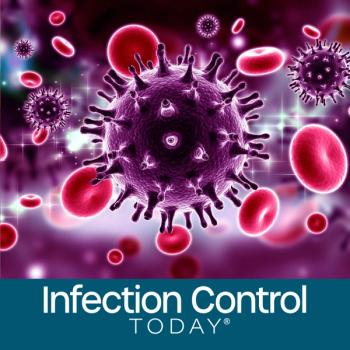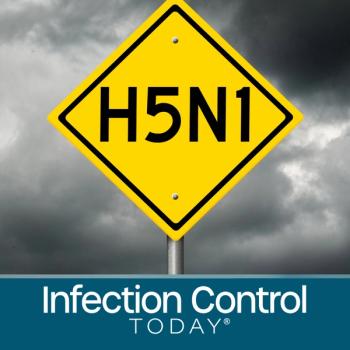
Multidrug-Resistant Infections Necessitate Bacteriophage Treatment: Can We Get There in Time?
Broad-spectrum antibiotics are powerful medicines because they are a single chemical compound capable of disrupting essential microbial processes shared by many types of microbes. In medical and agricultural settings, these readily available drugs offer inexpensive and effective ways to treat and prevent microbial diseases, without requiring a precise diagnosis.
However, the traits that drive antibiotics’ immediate, wide-ranging appeal are also a source of risk. At the individual level, broad-spectrum antibiotics may indiscriminately kill both pathogenic and beneficial microbes. Antibiotic treatments that disrupt the survival and stability of beneficial microbial populations—particularly in the gut—can lead to serious and undesirable adverse effects, including opportunistic secondary infections. Long-term overuse and misuse of antibiotics create intense environmental pressure for the evolution, selection, and transmission of antimicrobial resistance (AMR) genes across a wide range of microbial species with initial susceptibility.1
Finally, as resistance genes evolve and become more prevalent, the cost, complexity, and failure rate of antibiotic treatment increase. When AMR resistance is common, effective treatment requires increasingly sophisticated antimicrobial susceptibility testing to identify which antimicrobials an infection is resistant to. This testing adds to the expense and complexity of treatment, and may not be available in low-resource medical settings.2 Moreover, drug-resistant infections require more intensive care, including sequential and combination treatment approaches. When deadly infectious diseases acquire multidrug resistance, they can become a serious threat to public health.
The long-term global consequences of exuberant antibiotic use are already here. AMR infections have become a silent epidemic of the 21st century and a leading cause of death around the world. A systematic analysis of AMR’s disease burden in 2019 attributed 1.27 million deaths to bacterial AMR and an associated 4.95 million deaths with AMR infections.3 As a point of comparison, the World Health Organization estimates have attributed 4.47 million excess deaths to COVID-19 in 2020.4
Combating Multidrug-Resistant Infections With Bacteriophage Treatment
Efforts to mitigate the development of AMR resistance must continue; however, they will not help address multidrug-resistant infections that have already emerged. Saving the lives of individuals with deadly multidrug-resistant infections will require the development of antimicrobial therapies with unique modes of action.
Importantly, when the antimicrobial therapies' modes of action are more complex and microbe-specific, they can better withstand long-term resistance. For instance, it is generally easier for microbial populations to become resistant to antimicrobial therapies with a single, static mode of action (such as a single broad-spectrum antibiotic) than to multiple mechanisms (from a combination of therapies) or to changing mechanisms (from a therapy capable of coevolution).5 Additionally, resistance genes for a therapy may be less likely to persist or spread if the effects of the therapy are very specific to a microbial strain or species.
One reemerging antimicrobial approach is the treatment with lytic bacteriophages, which are viruses that specifically infect bacteria and rapidly kill their hosts through cell lysis. Bacteriophage therapies were first discovered around the same time as antibiotics, in the early 1900s. However, they were largely abandoned in Western countries in favor of antibiotics, which were preferred due to their relative simplicity and broader efficacy.
The tradeoffs for antibiotics are inverted for bacteriophages. Antibiotics’ static mechanisms make them broadly efficacious in the short term but highly susceptible to AMR in the long term. In contrast, bacteriophages are pathogens themselves, capable of coevolving in ways to counter resistance in a bacterial population. This means that bacteriophage therapies are much less susceptible to sustained AMR, even when short-term resistance occurs. However, the adaptability of bacteriophages generally limits their efficacy to the bacterial strains with which they have coevolved.
The tradeoffs associated with host specificity extend beyond AMR susceptibility to safety and operational intricacy. Bacteriophages’ extreme host specificity can reduce the adverse effects of administration compared with antibiotics, as the latter are more likely to disrupt the normal microflora. Moreover, antibiotics are relatively easy to manufacture and administer at scale. However, the utility of bacteriophage therapies is hindered by logistical and cost constraints. Rapid matching of bacteriophage therapies to a specific infectious bacterium requires access to a bank of preidentified bacteriophages. The subsequent manufacturing, transport, and administration of a live virus–based therapy are also technically complicated and costly.
Despite the complexity of bacteriophage development and administration, progress is being made, propelled by an accumulation of evidence that bacteriophage therapy can treat challenging multidrug-resistant infections.6 In Belgium, where a national phage bank has been established to support personalized phage treatments, findings from a retrospective study of individualized bacteriophage therapy demonstrated that of 100 cases, challenging infections were eradicated in about 60% of patients.7 As the prevalence of multidrug-resistant infections grows, developers of bacteriophage therapies are actively pursuing strategies to broaden their efficacy, lower resistance risk, and increase scalability.
Development of bacteriophage therapies with broader efficacy
Ongoing therapeutic development is focused on broadening the efficacy of bacteriophage therapies. This can be achieved through the combination of multiple strain-specific bacteriophages into a single “cocktail” therapy, sequential treatment with multiple bacteriophages, or the combination of a bacteriophage with other treatment approaches, such as antibiotics.7
Developing a broadly efficacious bacteriophage treatment requires testing and developing a bacteriophage therapy against a diverse panel of target bacteria. For instance, if developing a broader-acting bacteriophage cocktail therapy to treat Escherichia coli in humans, then the panel should include strains isolated from multiple human populations, medical settings, and global regions to capture the full diversity of bacterial lineages.8 However, many laboratories developing bacteriophage therapies do not have access to a diverse panel of strains, and this limits their ability to test the breadth of their bacteriophage’s activity against a target bacterial species.
Bacteriophages included in a bacteriophage cocktail can also be directed to evolve in ways that recombine various bacteriophage mechanisms. For instance, in data from 1 study, a cocktail of 4 bacteriophages against an infection demonstrated approximately 50% activity against a broad spectrum of bacterial strains, indicating that the bacteriophage cocktail killed 50% of the strains. Once a bacterial phage of recombinant type was added to this cocktail, that activity increased to 71%.9
Development of Bacteriophage Therapies With Low Rates of Resistance
Efforts to broaden the efficacy of a bacteriophage therapy can also reduce the likelihood of resistance. For instance, bacteriophages can be combined into a cocktail, where each bacteriophage has a different infection mechanism that targets slightly different cell receptors or the same receptor at different sites. Multifaceted modes of attack give phages a leg up in their evolutionary arms race against bacterial hosts, because they multiply the traits required for successful bacterial evasion.
The same principle applies to combining bacteriophage therapies with other antibacterial treatments that employ different modes of action. For instance, data from a Belgian retrospective analysis showed that combination treatments of antibiotics and bacteriophage therapy were synergistic, making bacteria more susceptible to bacteriophages and resensitizing them to antibiotics. When antibiotics were not used concurrently with individualized bacteriophage therapy, the likelihood of eradication was 70% lower.7
Finally, bacteriophages themselves can be selected for lower rates of resistance. For instance, some bacteriophages bind to areas of a cellular membrane receptor that are less likely to mutate, making their infection mechanism's efficacy harder to evade than that of bacteriophages that bind to surfaces of a cellular membrane receptor that mutate more frequently.10
Increasing access to bacteriophages in real-world settings
Access to and awareness of bacteriophage therapy remain limited to areas with a sophisticated health care infrastructure and investment in bacteriophage development. Even where bacteriophage therapy is available and well understood, evidence-based guidance for its therapeutic use is limited to retrospective analyses of case-by-case treatments. Therefore, randomized prospective clinical trials are a requisite next step for increasing access to bacteriotherapy and establishing guidelines for clinical use. However, clinical trials must be well-designed. Historically, the failure of phage therapy clinical trials with flawed designs has disincentivized investment in the field.11 To effectively demonstrate efficacy, bacteriophage clinical trials should adhere to the following restrictions:
- Susceptible patient selection: Only individuals whose infections show initial signs of susceptibility to the phage treatment should be included. This can be determined by culturing the infectious bacteria and observing their in vitro response to the phage treatment.
- Sufficient treatment duration: Treatment should be administered for a sufficient duration, approximately 20 to 40 days.
Is Bacteriophage Therapy Wanted? More Investment Is Needed.
Although antibiotics are likely to remain the first-line treatment for infectious diseases, bacteriophage therapies have the potential to be life-saving. Multidrug-resistant infections are expected to become more prevalent, particularly in hospital settings. For many patients with these infections, bacteriophage therapy may be the only viable treatment option. Therefore, the development of broadly effective and scalable bacteriophage treatments should be a public health priority. For these therapies to be truly effective in a medical setting, advancements are also needed in the rapid and precise identification of infectious agents and antibiotic-resistant genes. Continued investment in both these areas could help prevent millions of deaths and combat a worsening AMR epidemic.
References
- Munita JM, Arias CA. Mechanisms of antibiotic resistance. Microbiol Spectr. 2016;4(2):10.1128/microbiolspec.VMBF-0016-2015. doi:10.1128/microbiolspec.VMBF-0016-2015
- Nandlal L, Perumal R, Naidoo K. Rapid molecular assays for the diagnosis of drug-resistant tuberculosis. Infect Drug Resist. 2022;15:4971-4984. doi:10.2147/IDR.S381643
- Antimicrobial Resistance Collaborators; Murray CJL, Ikuta KS, Sharara F, et al. Global burden of bacterial antimicrobial resistance in 2019: a systematic analysis. Lancet. 2022;399(10325):629-655. doi:10.1016/S0140-6736(21)02724-0
- Msemburi W, Karlinsky A, Knutson V, Aleshin-Guendel S, Chatterji S, Wakefield J. The WHO estimates of excess mortality associated with the COVID-19 pandemic. Nature. 2023;613(7942):130-137. doi:10.1038/s41586-022-05522-2
- Belay WY, Getachew M, Tegegne BA, et al. Mechanism of antibacterial resistance, strategies and next-generation antimicrobials to contain antimicrobial resistance: a review. Front Pharmacol. 2024;15:1444781. doi:10.3389/fphar.2024.1444781
- Sawa T, Moriyama K, Kinoshita M. Current status of bacteriophage therapy for severe bacterial infections. J Intensive Care. 2024;12(1):44. doi:10.1186/s40560-024-00759-7
- Pirnay JP, Djebara S, Steurs G, et al. Personalized bacteriophage therapy outcomes for 100 consecutive cases: a multicentre, multinational, retrospective observational study. Nat Microbiol. 2024;9(6):1434-1453. doi:10.1038/s41564-024-01705-x
- Nikolich MP, Filippov AA. Bacteriophage therapy: developments and directions. Antibiotics (Basel). 2020;9(3):135. doi:10.3390/antibiotics9030135
- Burke KA, Peters TL, Kirillina OA, et al. Phage host range expansion through directed evolution on highly phage-resistant strains of Klebsiella pneumoniae. Int J Mol Sci. 2025;26(15):7597. doi:10.3390/ijms26157597
- Filippov AA, Sergueev KV, He Y, et al. Bacteriophage-resistant mutants in Yersinia pestis: identification of phage receptors and attenuation for mice. PloS One. 2011;6(9):e25486. doi:10.1371/journal.pone.0025486
- Kim MK, Suh GA, Cullen GD, et al. Bacteriophage therapy for multidrug-resistant infections: current technologies and therapeutic approaches. J Clin Invest. 2025;135(5):e187996. doi:10.1172/JCI187996 996
Newsletter
Stay prepared and protected with Infection Control Today's newsletter, delivering essential updates, best practices, and expert insights for infection preventionists.






